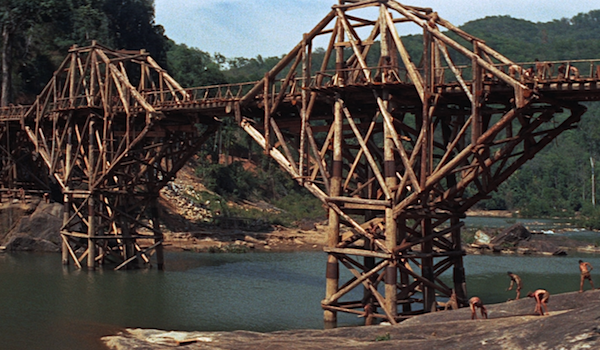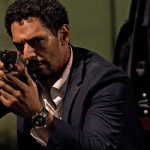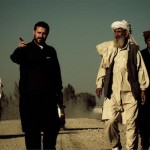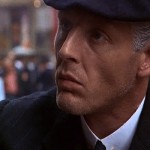The Bridge on the River Kwai Review
“The Bridge on the River Kwai†is a fascinating look at war, its rules, and the madness often required to follow them. What is the responsibility of a prisoner-of-war? Should he follow the orders of his captors and work to assist their cause? Or should he sabotage their efforts by any means necessary? And what of an injured soldier: should he be left behind in order to complete one’s objectives, or is his life valued above the mission? David Lean, best known for historical epics such as this, crafts a brilliant motion picture. Forget his bloated “Lawrence of Arabia.†This is his masterpiece.
The story, adapted from a novel of the same name by Pierre Boulle, follows two paths. In one, a British Colonel Nicholson (Alec Guinness) and his men are brought to a Japanese prison camp in 1943 Burma. Colonel Saito (Sessue Hayakawa), leader of the camp, orders all of the men, officers included, to begin construction of a bridge over the river Kwai. Nicholson is appalled at Saito’s insistence that the British officers work with the rest of the men. When he refuses to work, he is put in “the oven,†a small metal hut in the boiling sun. But with increased pressure on Saito to meet his deadline for the completion of the bridge, he relents and allows the officers, led by Nicholson, to take charge of the project rather than join in its construction.
Meanwhile, American Major Shears (William Holden) has been a prisoner-of-war at the same camp for quite some time. With the Japanese occupied by the Nicholson situation, Shears is able to escape. He stumbles through the jungle without much hope until by chance he is picked up by the British, who nurse him back to health. Once better, he is compelled to join them on a mission back to the river Kwai to blow up the very same bridge Nicholson and his men are working on.
The novel by Boulle actually didn’t include the story about Shears. Lean added it in to the film in order to incorporate some adventure and make it friendlier for American audiences. He also featured one of the biggest American stars of the time in the role. William Holden, who was nominated for an Academy Awards for his portrayal of the cynical Shears, gets it just right.
But the real star is Alec Guinness, who gives the finest performance of his career and won the Oscar for Best Actor. Nicholson is downright scary in his convictions. He’s an old school soldier, who doggedly follows the rules. It doesn’t even cross his mind that what he is doing might be wrong until one of the film’s final scenes in which he and Shears cross paths and are forced to confront everything they’ve believed to be true about war. It’s a phenomenal scene made better by the terrific performances and sympathy we’ve built up for the characters.
The cinematography is top-notch. Filmed on location in Ceylon (now Sri Lanka), Shears’ trek through the jungle to the bridge is beautifully filmed and gives you the feeling of actually being there, which increases the impact of the message. We know what war can do to you, for we just went through it.
The music is also spectacular. One of the film’s standout scenes is the first march by Nicholson’s men into the POW camp. They whistle the “Colonel Bogey March†in unison, which gives us a sense of Nicholson’s character; he is a leader who is highly respected by all the men. But the rest of the score, by Malcolm Arnold, is also outstanding, appropriately somber and bombastic at different times.
“The Bridge on the River Kwai†won seven Academy Awards in 1957 including Best Picture, and it deserved every one of them and more. It is an anti-war film without shoving politics down the viewer’s throat, and that’s because it doesn’t need to do so. The film is incredibly compelling and asks tough questions. The acting, direction, and behind-the-scenes work are all absolutely perfect. It’s one of the finest war films ever made.















